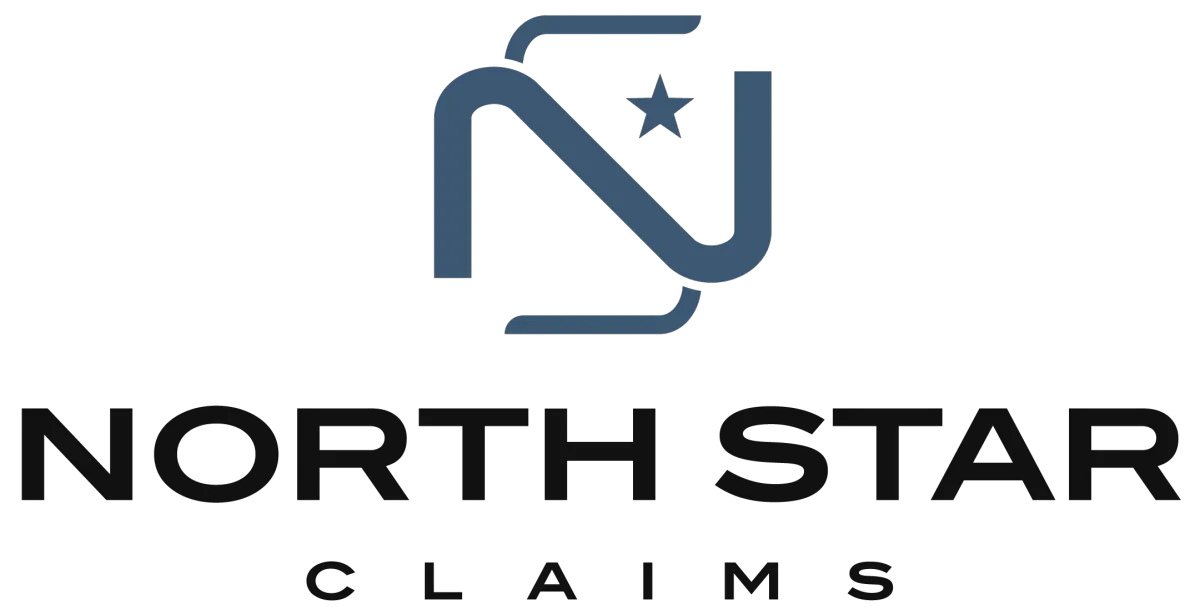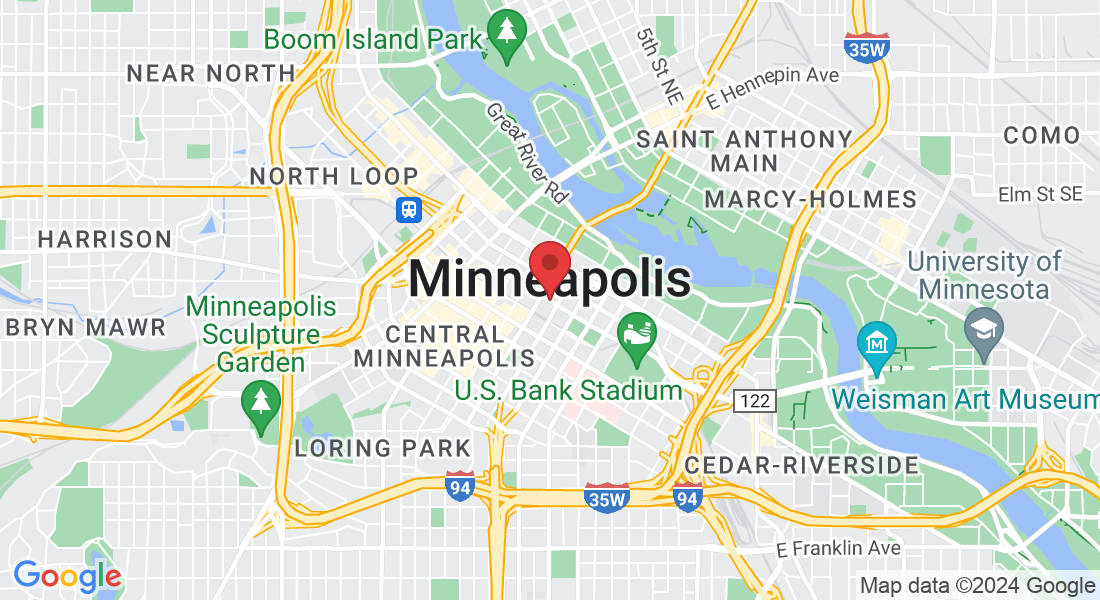Insurance Claim Denied?
Securing Your Rightful Settlement In Insurance Claims
About Us
Our team includes a licensed public adjuster and appraiser with accreditation in Minnesota, Iowa, and Missouri. With a strong background in the insurance industry, the founder Jonathan excelled as a sales representative and project manager for a prominent nation-wide storm restoration company, achieving notable success in sales performance.
Transitioning to a role as a public adjuster and appraiser, we found a profound sense of fulfillment in assisting individuals with their insurance claims, driven by an unwavering commitment to integrity and service. With a passion for educating homeowners and advocating for their rightful claims in times of need, our team member embodies the principle of treating others as they would want to be treated. While maintaining professionalism, they also hold dear roles as a family person and friend, which underpin their dedication to helping others.
Our Mission
Our mission is grounded in the belief that integrity is paramount. We are committed to ensuring that insurance companies adhere to the highest standards of accountability, fulfilling their obligations under the policy when perils occur. Additionally, we aim to empower homeowners with knowledge, helping them comprehend the scope and coverage of their policies.
Who we are
We are a team of public adjusters dedicated to ensuring fairness and transparency in every insurance claim. Our passion lies in holding insurance companies accountable to their commitments. We are eager to serve you with this mission at the forefront of our work.
Our Services
We work for YOU, the homeowner or business owner. We do NOT work for an insurance company, contracting company, or government agency!
Hail Storm
Hail damage can cause significant damage to a roof. The severity of the damage can depend on the size of the hailstones, the speed and direction of the wind, the age and condition of the roof, and the materials used in the roof's construction.When hailstones hit a roof, they can cause dents, cracks, and punctures in the shingles or tiles. These damages can weaken the roof's protective layer and expose the underlying layers to moisture and other elements, leading to leaks and further damage.Hail can also dislodge granules from shingles, which can reduce the shingle's ability to protect the roof from UV rays and other weather elements. The loss of granules can also affect the appearance of the roof, making it look worn and faded.In severe cases, hail can even cause holes in the roof or break through the roof's surface, which can result in water damage to the interior of the home. The damage caused by hail can be difficult to detect, and it is recommended to have a professional inspection to determine the extent of the damage and the necessary repairs.
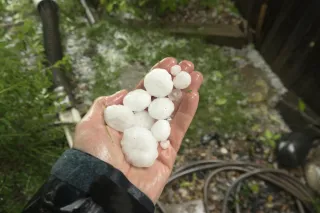
Fire
Fire and smoke damage to a home can be devastating, and the effects can be long-lasting. Fire damage can destroy structural components, personal belongings, and furnishings, while smoke damage can cause unpleasant odors and discoloration throughout the home.
Here are some of the ways that fire and smoke can damage a home:
Structural damage: Fires can weaken or destroy the structural components of a home, including walls, floors, and ceilings. This can compromise the safety and stability of the home, and require extensive repairs.
Smoke damage: Smoke can infiltrate every part of a home, leaving a residue that can discolor walls, ceilings, and furnishings. The odor can also be difficult to remove and can linger for a long time.
Water damage: In many cases, water damage can result from efforts to put out the fire. This can further damage the home and require additional repairs.
Electrical damage: Fires can damage electrical systems, which can create a risk of shock or electrocution. This can also lead to additional damage or fires if not addressed promptly.
Personal property damage: Fires can destroy personal belongings, including furniture, clothing, and sentimental items. Smoke damage can also ruin items, leaving them with a strong odor or discoloration.
Fire and smoke damage can be difficult to repair and can require professional restoration services. It is important to take immediate action to address any damage to minimize the extent of the damage and prevent further harm to the home and its occupants.
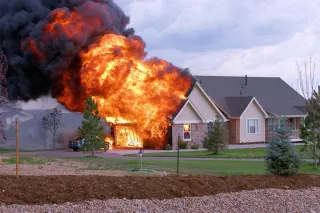
Windstorm
Wind damage to a house can occur in a number of ways, and can range from minor to severe. Some of the common types of wind damage to a house include:
Roof damage: Strong winds can lift shingles, tiles or metal roofing materials from the roof, exposing the underlying structure to the elements. This can result in leaks, water damage, and even structural damage if left untreated.
Siding damage: High winds can cause siding materials to peel off, break, or become dented. This can lead to moisture infiltration, and can also impact the appearance of the house.
Window and door damage: Windows and doors can be vulnerable to wind damage, with strong winds causing them to crack, shatter, or come off their hinges. This can leave the home exposed to the elements, and also pose a security risk.
Falling trees and branches: High winds can cause trees and branches to fall, potentially damaging the roof, siding, or other parts of the house.
Structural damage: In extreme cases, high winds can cause structural damage to a house, including damage to the foundation or walls. This can compromise the stability and safety of the house, and require significant repairs.
Wind damage to a house can be costly to repair, and can also pose a safety risk to occupants. It is important to regularly inspect your home for signs of wind damage, and address any issues promptly to prevent further damage.
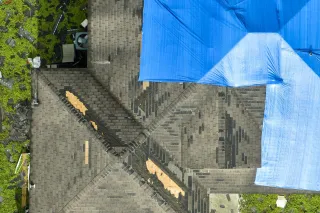
Tornado
Tornadoes are powerful and destructive natural disasters that can cause extensive damage to homes and other structures. The strong winds and swirling debris associated with tornadoes can rip roofs off buildings, shatter windows, and topple trees and power lines, causing widespread damage and disruption.
Here are some of the ways that tornadoes can cause damage:
Roof damage: The high winds of a tornado can cause roofs to lift off or be completely torn away from homes and buildings. This can lead to water damage and structural damage inside the building.
Window and door damage: High winds and flying debris can shatter windows and doors, leading to additional damage and exposure to the elements.
Structural damage: Tornadoes can cause significant structural damage to homes and buildings, including collapsed walls and roofs, and shifting foundations.
Debris damage: Tornadoes can hurl debris at high speeds, causing damage to nearby structures and endangering people in the area.
Electrical damage: Tornadoes can damage electrical systems, creating a risk of electrocution or fire. Downed power lines can also pose a danger to people and property.
Water damage: Tornadoes can cause flooding and water damage as rainwater enters homes and buildings through damaged roofs and windows.
Tornado damage can be severe and widespread, requiring immediate action to assess the extent of the damage and make necessary repairs. It is important to prioritize safety and follow all evacuation orders and warnings from local authorities during a tornado event. After the tornado, it is recommended to contact a professional restoration service to assess the damage and make necessary repairs
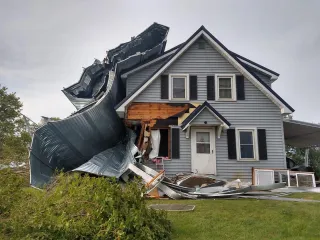
Burst Water Pipes - Clogged Pipes
Busted pipes can cause significant water damage to a home. When pipes burst, water can flow out at a high rate, flooding the area around the pipes and damaging the walls, floors, and ceilings
\.
Here are some of the ways that busted pipes can cause water damage to a home:
Flooding: Burst pipes can cause flooding, which can damage the floors, walls, and ceilings. Standing water can also lead to mold growth, which can pose a health risk to occupants.
Structural damage: Water can weaken the structural components of a home, including the walls and floors. Over time, this can lead to sagging, warping, or even collapse.
Electrical damage: Water can damage electrical systems, creating a risk of shock or electrocution. This can also lead to additional damage or fires if not addressed promptly.
Mold growth: Water damage can create the ideal conditions for mold growth, which can be difficult to remove and pose a health risk to occupants.
Personal property damage: Water can damage personal belongings, including furniture, clothing, and sentimental items. Water damage can also cause items to become discolored, warped, or moldy.
It is important to take immediate action to address any water damage caused by busted pipes. This can involve shutting off the water supply, removing standing water, and drying out the affected area to prevent mold growth. It is also recommended to contact a professional restoration service to assess the extent of the damage and perform any necessary repairs.

Meet Our Public Adjusters


Jonathan Pugsley
Public Adjuster
MN, IA, MO
Timothy Kopylov
Public Adjuster
MN
Frequently Asked Question
What is a public adjuster, and why do I need one?
A public adjuster is a licensed insurance professional who represents policyholders in the claims process. Their job is to ensure that the policyholder receives a fair and adequate settlement from their insurance company. You may need a public adjuster if you've suffered damage to your home, business, or personal property and want to ensure you receive the maximum compensation for your claim.
How much will my insurance company pay for my claim?
The amount your insurance company pays for your claim will depend on your policy coverage and the extent of the damage. Your public adjuster will review your policy and assess the damage to determine the maximum amount you're entitled to receive.
How do I file an insurance claim?
To file an insurance claim, you'll need to contact your insurance company and provide them with information about the damage. Be sure to document the damage with photographs or video and keep all receipts and invoices related to any repairs or replacements. Your public adjuster can assist you with this process.
How long does the claims process take?
The length of the claims process can vary depending on the severity of the damage and the complexity of the claim. It's not uncommon for the process to take several weeks or even months. Your public adjuster can provide you with an estimate of how long the process may take and keep you updated throughout the process.
Will my insurance rates increase if I file a claim?
Filing a claim may result in an increase in your insurance rates. However, this will depend on your insurance company's policies and the circumstances surrounding your claim. Your public adjuster can provide you with guidance on whether it's in your best interest to file a claim based on your specific situation
Can I still file a claim if I've already started making repairs?
It's important to notify your insurance company and your public adjuster as soon as possible after the damage occurs. However, you may still be able to file a claim even if you've already started making repairs. Your public adjuster can assist you in providing documentation and information to support your claim.
What should I do if my insurance company denies my claim?
If your insurance company denies your claim, you have the right to appeal their decision. Your public adjuster can help you understand the reasons for the denial and assist you in filing an appeal.

